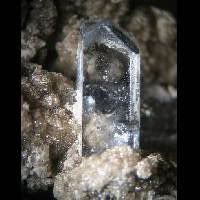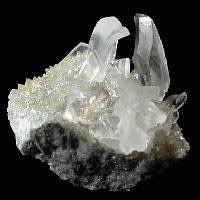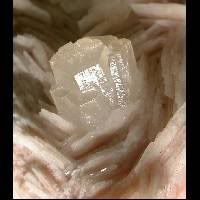
I started my road trip with a nearly hour-long drive along Highway I-25 which ended up at the Garden of the Gods in Colorado Springs. The Garden of the Gods is a stunning creation of various stunningly colored rocks, formed mostly of clastic and chemically precipitated sedimentary rocks, deposited in layers.
The Garden of the Gods includes several different types of rocks. These rocks are tilted upward, which was a result of Laramide Orogeny, which means that they were uplifted during the mountain building of the Laramide period, approximately 70 million years ago. The Laramide period occurred during the Cretaceous period, just after the extinction of the dinosaurs. During the period from 60-70 million years ago, throughout the Paleocene age, the rock layers were tilted upright while still low underground. As the mountains rose, erosion removed most of the softer layers, exposing the layers of rock that form the Garden of the Gods that we see today. It is speculated that there is still some uplift occurring even today.
The amount of stress in the strata, or layers, of rock during the Laramide period caused

many faults to occur within the Garden of the Gods. The faulting is the reason that these layers are so vertical, and can often be moved diagonally or laterally and may seem out of order. The Rampart Range Fault is the main fault that caused the Garden of the Gods to be vertical and overturned. It actually starts in the Garden of the Gods and runs north for about 30 miles. The arid climate also helped to create the type of erosion, and the Garden of the Gods was a product of differential erosion, meaning that the shales and mudstones eroded more easily in the wind, water, and ice exposure than the sandstone.
We started our hike walking around the park from the east to the west, and the layers of the rock get older as we went along. As we travelled around the park, the layers of rock we saw, in order of youngest to oldest are:
The Pierre Shale is a clastic rock formation found in the Garden of the Gods. These rocks consist mainly of mud. This is the thickest and most common formation in Colorado Springs, and also contains fossils, although these fossils consist mainly of clams, fish, and ammonites. This is the newest layer, and is thought to have originated from the Paleocene period, between 60 and 70 million years ago.

The Niobrara Formation is a limestone formation, which is a chemically precipitated rock, although fine-grained and overflowing with marine fossils. The fossils found in the Niobrara Formation include shark teeth. This formation was formed from a deep-sea environment. This formation is thought to have formed between 70 and 135 million years ago, during the Cretaceous period.
The Benton Group Formation is made up of shale and limestone, and is also clastic, resulting in the sea becoming more shallow and flowing over the beach. The softer shales are easily eroded. This formation was also formed during the Cretaceous period, between 70 and 135 million years ago.
The Dakota Sandstone Formation is another clastic sandstone in nude, gray, and yellow colors, layered with shales. It was formed from a marine environment that settled on or near a beach. This formation is part of the Dakota Group. This is another formation formed during the Cretaceous period.
The Purgatoire Formation, also part of the Dakota Group, is made up of clastic shales, siltstone, and whiter shades of sandstone. There is only a small hill directly behind the Ute Indian Trail marker that consists of this formation, and it is believed that it came from a flood plain environment. This formation also comes from the Cretaceous period.
Morrison shales and clays, wh

ich accumulated in a warm, damp, lowland environment are one of the layers of rocks found in the Garden of the Gods. This is more commonly known as gypsum, and is thought to have formed from a slow-moving river. The small white hills on the Ridge Trail come from this formation. (The Morrison Formation is also known to hold dinosaur fossils in other areas of Colorado, such as Morrison, which is also how the formation got its name.) The lower layer of gypsum is chemically precipicated, whereas the rest of this formation is clastic (the shales and clays). This formation was deposited approximately 150 million years ago, during the Jurassic period.
The Lykins Formation is a reddish colored layer of chemically precipitated rock, thinly bedded and made up mostly of shales and siltstones, such as dolostone and limestone. These layers are created in a marine environment, and are fossil algae called Stromatolites. The Lykins Formation is thought to have formed between 225 and 270 million years ago, in the Permian period.
The next layer of rock is the Lyons Sandstone formation. This formation is also made up of clastic rock, particularly cross-bedded, fine grained quartz sandstone. It is believed that the Lyons Sandstone formation is a solidified sand dune. This formation was also formed between 225 and 270 million years ago, during the Permian period.
Gradually changing from the Lyons Sanstone formation, you can see the next rock layer formed there, which is the Fountain Arkose Formation. This is a very coarse grained formation and consists of over 25% feldspar, also containing large quartz crystals. It is a formation of rock that is extremely old, and shows the history of ancient Rocky Mountains. It is believed that this formation was deposited approximately 275-310 million years ago, during the Pennsylvania period. This layer of clastic rock comes from stream deposits.
Stronium
Some important minerals found in the Garden of the Gods are Celestine, the most common strontium mineral, and gypsum, which is formed from arid marine environments.
The Garden of the Gods is a beautiful park filled with various layers of rock, which to the untrained eye is simply a wonder, but to the geologist who

knows or learns it’s amazing history, is incredible.
Celestine http://www.mindat.org/loc-6113.html
Gypsum
There were so many wonderful sights to see, with the rocks forming so many interesting shapes, such as the “Kissing Camels”, “Siamese Twins,” and the “Praying Hands” that it was hard to select just a few pictures to share the beauty of the Garden of the Gods.

Balance Rock, Garden of the Gods





























